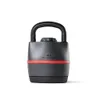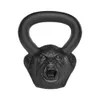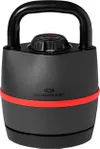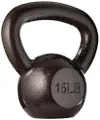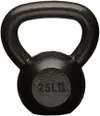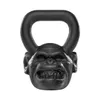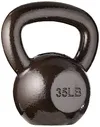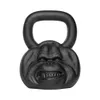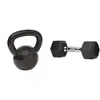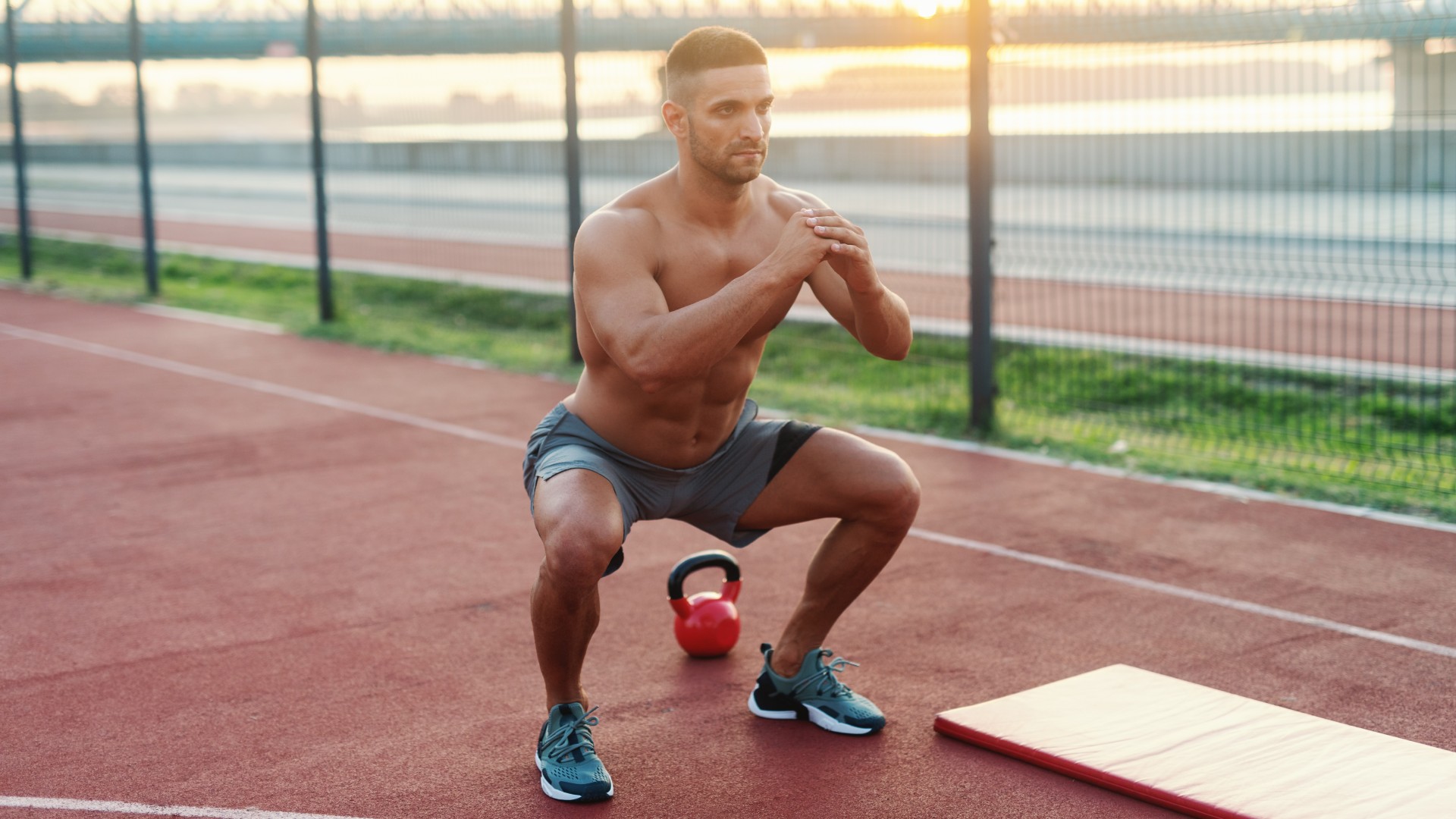
Combine a good morning with a back squat and you’ve got Kang squats — one of the toughest squat variations to master using your bodyweight, dumbbells, kettlebells, plates, or barbells.
Squats build lower body strength and muscle and core stability, target your glutes, quads, hip flexors, hamstrings and calves and even strengthen your back and joints. Moreover, learning how to squat is one of the best ways to improve your functional fitness, helping you exercise and perform daily tasks better.
The Kang squat can be practiced using just your body weight. I like to roll out my exercise mat at home rather than head to the gym occasionally, so I added a kettlebell and tried it. Here’s how to do a Kang squat, and why you should incorporate it into your fitness routine.
How to do a Kang squat
To perform a Kang squat, you’ll start with a good morning and transition fluidly into the bottom of a squat, reversing the motion to stand. I strongly recommend practicing with your body weight before adding weight; this will help build mobility, allowing you to sit deeper into the squat while warming up the relevant muscle groups.
Here’s a step-by-step:
- Stand with your feet shoulder-width apart and grip the ground with your feet
- Pull your shoulders back and squeeze your back and core muscles
- Start with your good morning by hinging forward at your hips and sending your bum back, maintaining a flat back and soft knee bend
- Keep your neck neutral and chin tucked toward your chest
- Lower your chest until parallel to the ground — you should be able to rest a cup of coffee on your back without spilling it
- Press through your mid-feet and heels, bend your knees and sit into a squat
- Lift your chest and lower until your thighs are at least parallel to the ground
- Return to the good morning position by lifting your bum and lowering your chest to parallel, keeping a soft bend in your knees
- Return to standing and squeeze your glutes.
Your hand positioning is up to you unless you’re exercising with weights. Some people like to extend their arms overhead to test upper body mobility and engage the whole body, or place their hands on the hips or behind the head. Others prefer to start with one of these options, then transition to outstretched arms during the squat.
Aim for anywhere between 3-4 sets of 8-12 reps.
Sign up to get the BEST of Tom's Guide direct to your inbox.
Get instant access to breaking news, the hottest reviews, great deals and helpful tips.
This one kettlebell exercise builds hip flexibility and strengthens your legs — so I tried it
I wouldn’t recommend trying this exercise if you’re still getting to grips with basic good mornings and squats. Once you’ve achieved decent depth in a bodyweight squat, add bodyweight Kang squats to your routine and build slowly.
I added one of the best kettlebells for weightlifting at a medium-heavy weight, holding it close to my chest using a goblet grip and two hands, but you could also use dumbbells or rest a barbell (loaded or unloaded) across your upper back.
The barbell Kang squat is the toughest variation of the move as you’re now combining a barbell back squat with a barbell good morning — loaded versions of the two moves. You’ll have to work hard to stabilize the weight across your upper body as you hinge forward, then send your weight backward and reverse the motion.
There are a few key benefits of Kang squats. First, you’re working tons of muscle groups; good mornings emphasize your posterior chain, primarily working your core, spinal erectors, hips, back, glutes, hamstrings and calves, and the squat targets these same muscle groups, plus your quads.
Although it’s not one of the best core exercises to strengthen your abs, your core muscles work hard to stabilize your body and are held under tension throughout every phase of the exercise. The time under tension technique is a fantastic way to keep muscles under contraction for longer through a full range of motion; work slowly to boost muscle activation, even in your upper body.
Another benefit of Kang squats is improved flexibility and mobility, especially around the hips, knees and ankles. The toughest transition is the shift from front to back body — the bottom of the good morning into the bottom of the squat. Sit deep into your mid-feet and heels and lift your chest without rounding your back.
The hardest part for me was this transition, as I have extremely tight ankles. Squats have always been my weakest of the “big 5" compound lifts for this reason, so I’m currently trying to include lower body mobility exercises into my routine to build a better range of motion.
Interestingly, one study amongst other research found that movements targeting your posterior chain muscles are beneficial for protecting your lower back, building back-body strength and reducing pain. Good mornings get a big tick for building mobility, flexibility and strength as you stretch the muscles under load.
Rather than packing on heaps of weight, I focused on maximizing tension in my muscles by moving slowly, and driving through my feet as I sat into the squat, pulling back my shoulders, straightening my back, moving with full control first, then reversing.
I’ve loved adding this exercise into my routine and it’s particularly efficient at preparing me for workouts involving my lower body. Kang squats should also help prepare your body for other weightlifting exercises like deadlifts or Olympic powerlifting.
If you don’t want to work with weights, use it as a preparatory bodyweight exercise for more advanced lifts that require lower body flexibility and strength.
More from Tom's Guide
- You don't need planks to build a stronger core, just this 4-move bodyweight abs workout
- Forget Russian twists — 5 standing ab exercises that sculpt your core muscles using one kettlebell
- I did planks with knee taps every day for a week to build core strength — here's what happened

Sam Hopes is a level 3 qualified trainer, level 2 reiki practitioner and senior fitness writer at Tom's Guide. She is also currently undertaking her Yoga For Athletes training course. Sam has written for various fitness brands and websites over the years and has experience across brands at Future such as Live Science, Fit&Well, Coach, and T3.
Having worked with fitness studios like F45 and Virgin Active, Sam now primarily teaches outdoor bootcamps, bodyweight, calisthenics and kettlebells. She also coaches mobility and stretching-focused classes several times a week and believes that true strength comes from a holistic approach to training your body.
Sam has completed two mixed doubles Hyrox competitions in London and the Netherlands and finished her first doubles attempt in 1:11.

